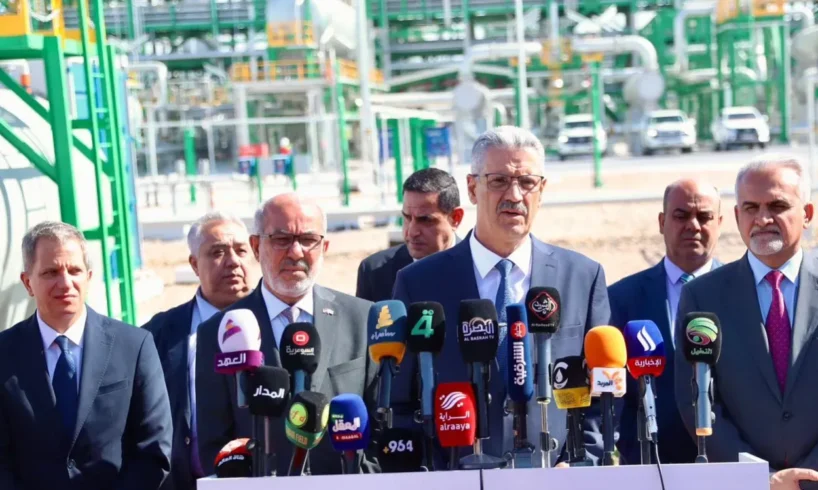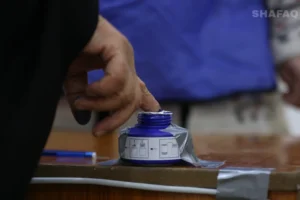
Shafaq News – Baghdad
Iraq has moved aggressively in 2025 to overhaul its gas
sector—pushing capture projects, sealing multi-billion-dollar partnerships, and
tying the effort to electricity security and an export ambition by year’s end.
Oil Minister and Deputy Prime Minister for Energy Affairs
Hayan Abdul Ghani says associated-gas utilization has climbed above 70%, a
shift he frames as the backbone of Iraq’s energy transition and fiscal
stability.
Wealth Ignited
Iraq sits on sizable natural-gas reserves—variously
estimated at 127–132 trillion cubic feet—yet production and utilization have
long lagged, with most volumes tied to oil output and historically burned off
at the wellhead. Multiple datasets and ministry briefings place Iraq among the
world’s top flarers, with 2024 flaring at roughly 17.37 bcm (down from 2023) as
capture projects slowly come online.
The gap reflects missing midstream: processing plants,
compression, and pipelines, and fragmented governance that slowed investment
cycles for years.
2025 Momentum
Baghdad’s most visible lever is the $27-billion Gas Growth
Integrated Project (GGIP) anchored in Basra. In September, the government
presided over joint operating agreements among the Oil Ministry, TotalEnergies,
QatarEnergy, and the Basra Oil Company—an umbrella meant to capture and process
associated gas, add solar capacity, and deliver the water-injection
infrastructure that sustains oil output. The partners reiterated plans to
recover up to 600 mmscfd of gas alongside oil development and utility-scale
solar.
On the ground, 2025 has featured project starts and facility
launches. In January, Abdul Ghani laid the foundation stone for a fast-track
gas plant at the Artawi (Ratawi) field in Basra, designed at 50 mmscfd. the
“ArtawiGas25” is expected to power around 200,000 Basra-area homes once
operational.
In July, the minister inaugurated new processing capacity in
Basra—including a central processing facility and a fresh line at the Basra
Natural Gas Liquefaction plant—expanding aggregate capacity by an estimated 330
mmscfd while re-committing to end routine flaring before the decade’s end.
Baghdad has paired this with broader upstream cooperation.
Senior Iraqi and company officials emphasize that GGIP’s value lies in
integration: gas capture feeding power plants, a solar build to ease peak loads,
and seawater injection to stabilize oil fields—raising overall system
efficiency rather than adding isolated assets.
Tehran’s Shadow
From the podiums this year, Abdul Ghani’s message has been
consistent: gas capture above 70% is a floor, not a ceiling, and flaring should
end by 2028–2029 with the current project pipeline. He has also linked liquid
self-sufficiency (notably diesel) to the same suite of investments and
logistics upgrades, signaling a pivot away from emergency fuel imports that
have strained the budget.
Inside parliament, the tone is more cautious. “There is no
immediate substitute for Iranian gas,” lawmaker Ali Saadoun al-Lami told Shafaq
News in March, warning that a sudden supply shock would shave megawatts off
Iraq’s grid and hit Baghdad and the provinces hardest. That assessment
resurfaced when sanctions dynamics complicated import waivers and when attacks
disrupted Iranian infrastructure—episodes that exposed Iraq’s vulnerability
before domestic capture and processing fully mature.
Molecules to Megawatts
Specialists speaking to Shafaq News have stressed that
2025’s gas push only pays off if midstream and power-sector reforms move in
lockstep. Energy analyst Hassan Abdul Jabbar said the revived BP partnerships
in the north are meaningful because they “include advanced systems designed to
expand [processing] capacity and reduce operational waste”—the kind of
incremental fixes that matter between flagship projects.
Deputy Oil Minister for Gas Affairs Ezzat Saber has
separately argued that utilization gains must be matched by power-sector
restructuring and demand-side management to translate molecules into stable
hours of supply.
On the consumption side, international data ranked Iraq 38th
globally in gas use this year at more than 19.3 bcm—a reminder that demand is
already large and rising. Without capture, that demand crowds out available
fuel for industry and locks in imports.
Waivers Say No
To bridge near-term gaps, Baghdad also sought alternative
gas via a Turkmenistan swap routed through Iran and managed by a Swiss
intermediary. But the Ministry of Electricity acknowledged to Shafaq News this
week that US objections have prevented implementation to date—another signal
that import-reliant stopgaps remain politically contingent.
Midstream the Wall
Shafaq’s energy coverage this year charts steady but uneven
gains. Officially, utilization moved from the low-50s to the high-60s and now
above 70% as new units came online; flaring volumes fell marginally in 2024
after years near the top of global rankings. Yet the scale of the problem
remains immense: tens of billions of cubic meters burned over the past decade;
billions of dollars spent on gas imports; and a national grid still short of
peak demand in summer.
Four constraints recur in expert and official commentary who
spoke to Shafaq News:
– Midstream gaps: Compression, processing, and trunklines are
the rate-limiters. Even where capture rises at the field level, bottlenecks
downstream can force venting or renewed flaring during outages.
– Financing and execution risk: Big-ticket projects like GGIP
concentrate political and contractor risk; slippage on any element—solar, water
injection, or gas hubs—cascades across the system.
– Institutional coordination: Oil, electricity, and
provincial authorities must synchronize maintenance windows and dispatch;
otherwise, captured gas still fails to map cleanly into power.
– Import exposure: Any shock to Iranian flows—or to
waivers—reverberates immediately across Iraqi cities, regardless of progress in
Basra.
The 2029 Promise
If the 2025 program holds, Iraq could flip large volumes
from flare stacks into power feedstock over the next 24–36 months, with the
Artawi units and GGIP phases doing early heavy lifting. Abdul Ghani has tied
that trajectory to an export ambition for late 2025—primarily liquids and
condensates linked to gas processing—while reiterating a 2028–2029 horizon for
ending routine flaring. The credibility of that path will turn on how quickly
the new plants ramp, how reliably pipelines and compression stay online, and
whether grid upgrades keep pace.
Two signposts to watch
– Field-level throughput: The 50 mmscfd Artawi module is a
test of schedule discipline and integration—can Iraq translate modular builds
into cumulative capture gains at scale?
– Import diplomacy: The Turkmen swap’s fate—and any renewed
US waivers—will determine whether Baghdad can hedge seasonal spikes until
domestic capture saturates the power sector.
Written and edited by Shafaq News staff.





